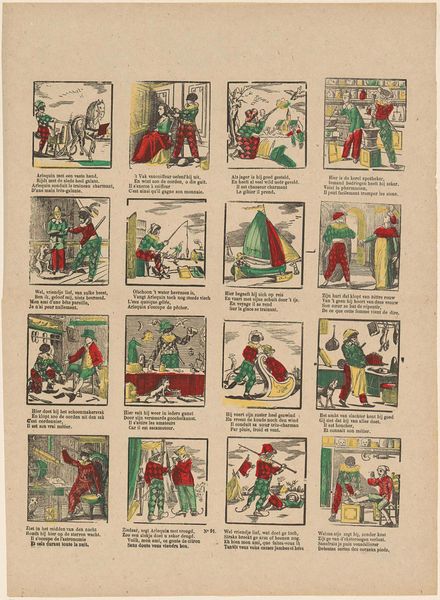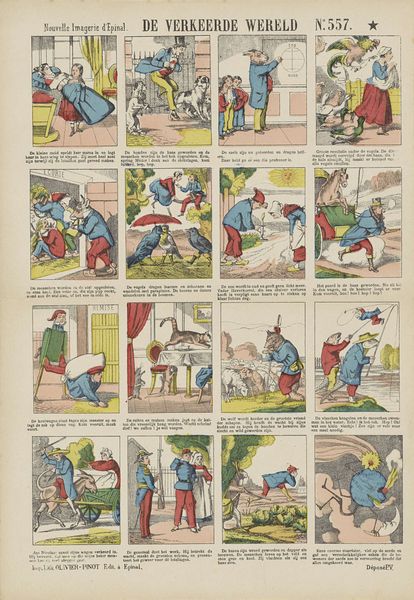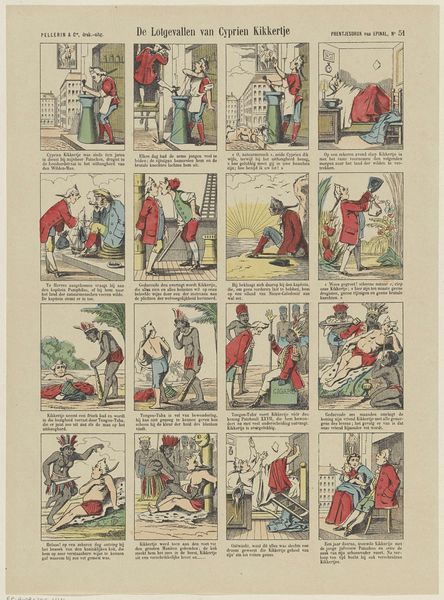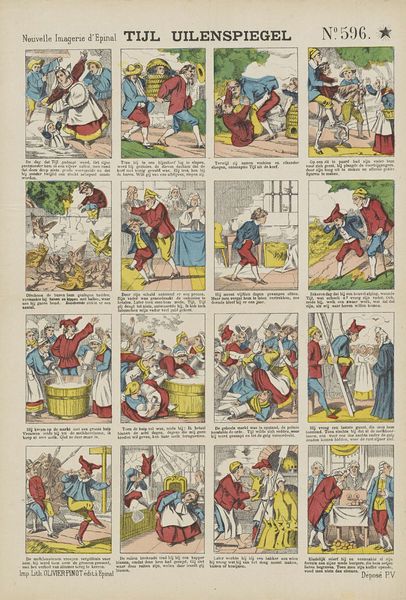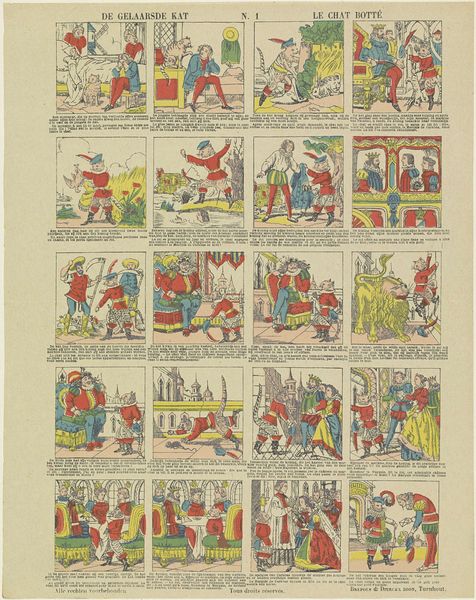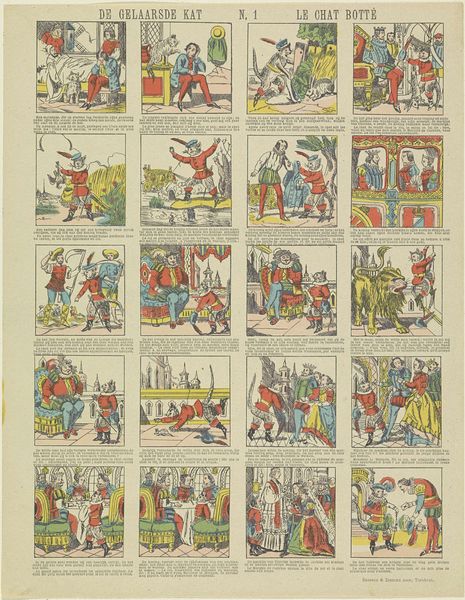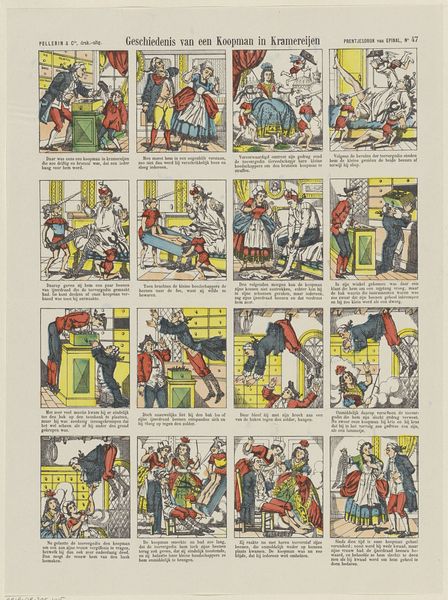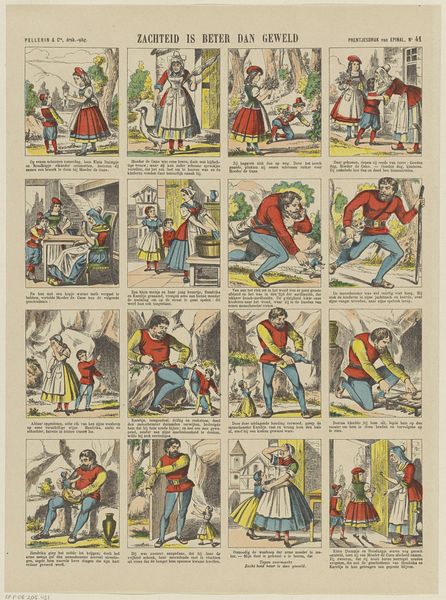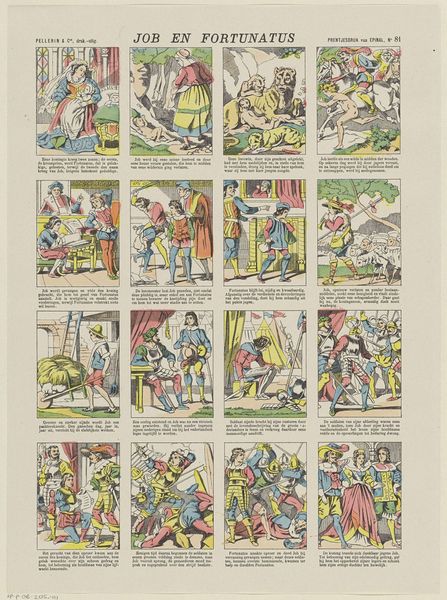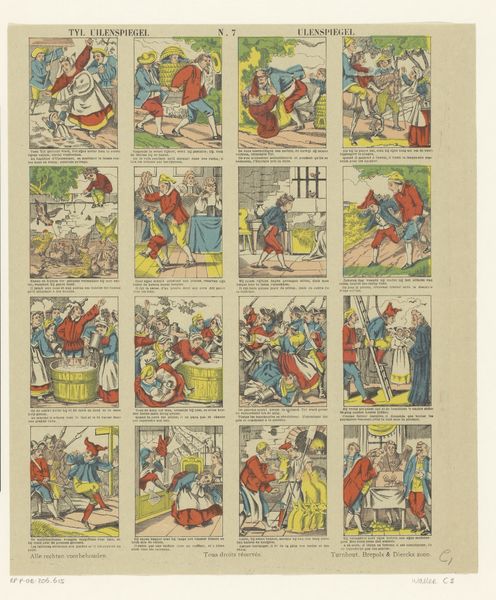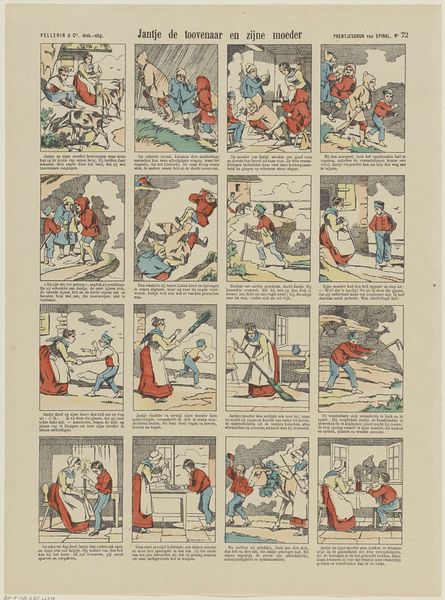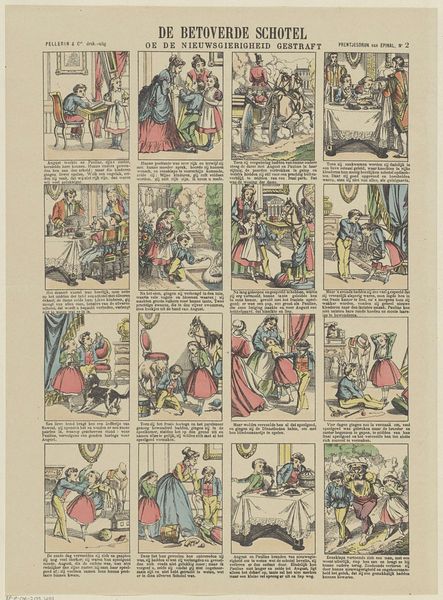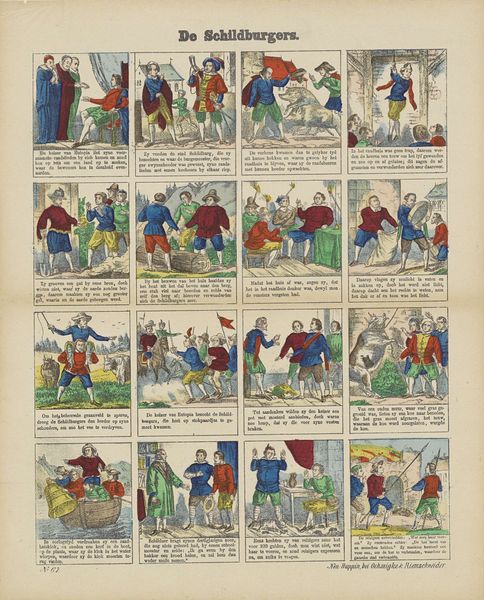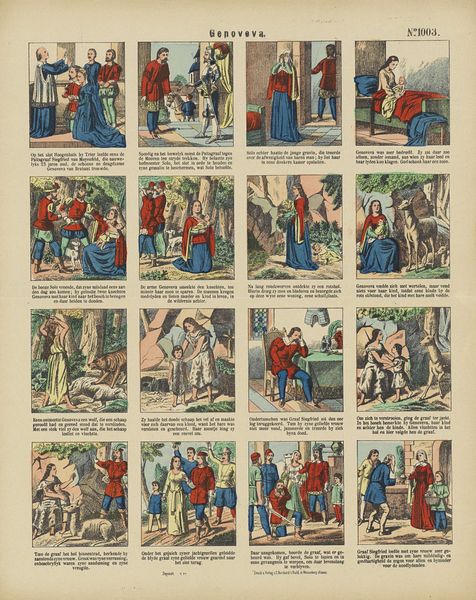
graphic-art, print
#
graphic-art
#
comic strip sketch
#
aged paper
# print
#
caricature
#
sketch book
#
traditional media
#
personal sketchbook
#
sketchwork
#
sketchbook drawing
#
genre-painting
#
history-painting
#
storyboard and sketchbook work
#
cartoon carciture
#
sketchbook art
Dimensions: height 401 mm, width 295 mm
Copyright: Rijks Museum: Open Domain
Curator: Take a look at this fascinating print by Pellerin & Cie, entitled "Mr. de la Palisse," dating approximately from 1791 to 1900. It's a captivating piece of graphic art. Editor: My initial impression? It's surprisingly humorous. The sequence of images gives off the feel of a tongue-in-cheek storyboard, yet it looks as though it's printed on paper that’s showing its age. Curator: Exactly! It presents a series of vignettes featuring the titular character. It would be good to dive into the intersection of historical narrative and caricature. Think about how gender roles are depicted and the social commentary embedded in each panel. Editor: You’re right. Considering Pellerin & Cie. as printmakers, I wonder about their production methods? The repeated imagery and textual additions evoke early mass production, democratizing access to satire in ways that shift away from individual, artisanal approaches. What about its wider availability and how it played a role in public opinion? Curator: Good question. This era witnessed significant social upheaval and challenges to aristocratic power. The humour targets these specific types, highlighting potential societal fractures or anxieties of the time. How might contemporary feminist theory, in fact, enable a reinterpretation of the character of Palisse and his relationships? Editor: Well, thinking materially, there must have been some process by which to render illustrations and their captions together with efficiency, meaning that decisions made by the illustrators probably weren’t based so much on their skill and finesse, but whether their methods could match output requirements and reduce the level of complex artistry. Curator: Yes, and how does this print fit into our broader narratives about gender, race and politics? How did prints such as this perpetuate stereotypes and reinforce hierarchies, or, in some cases, challenge them? Editor: Perhaps examining the materiality and manufacturing also illuminates something. Maybe we discover that by making images consumable and available, people's interaction with art altered substantially. Curator: Ultimately, this image allows us to rethink the power of satire and to question how narratives are shaped by the historical moment, the production process, and the prevalent ideologies. Editor: It's amazing how a simple series of images, analyzed through the lens of production and social context, can lead us to question established narratives and to consider the multifaceted ways in which art reflects—and affects—society.
Comments
No comments
Be the first to comment and join the conversation on the ultimate creative platform.
